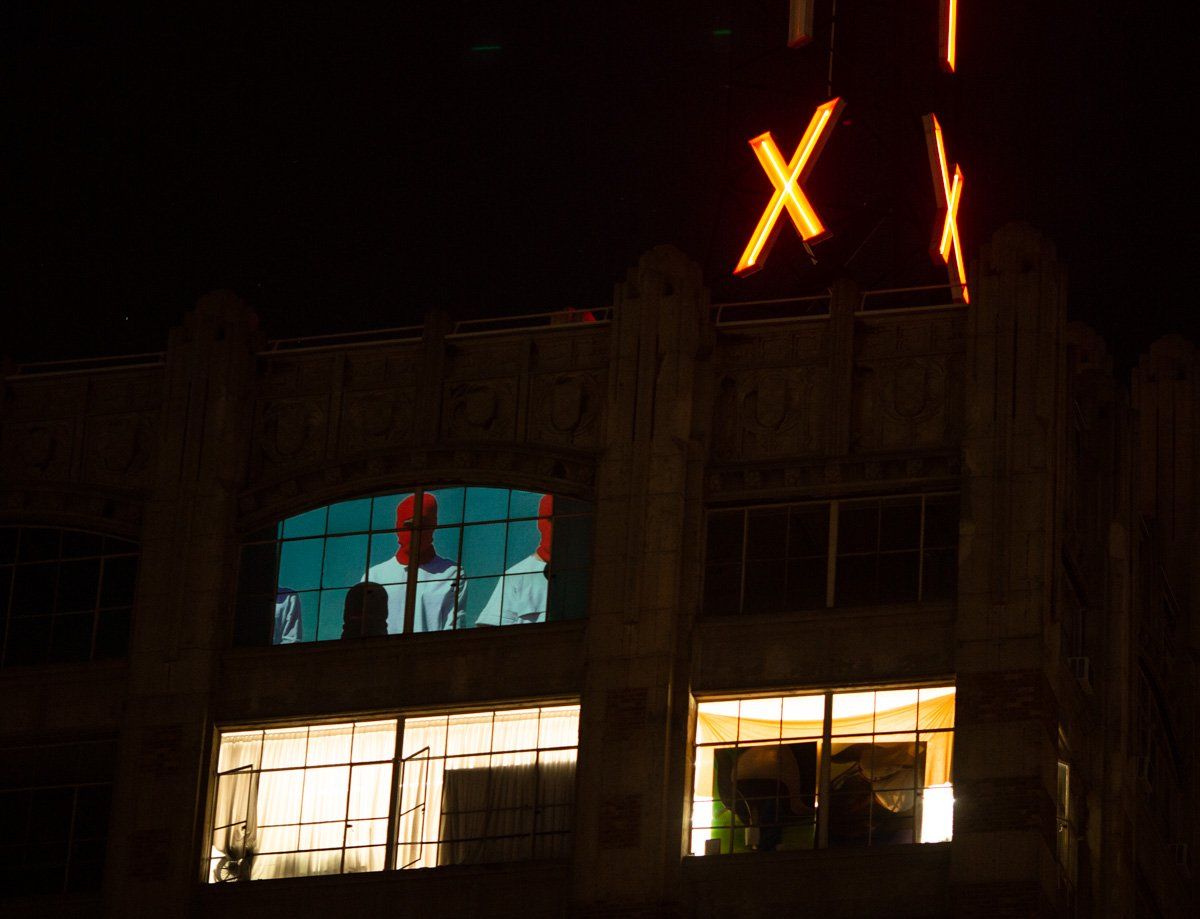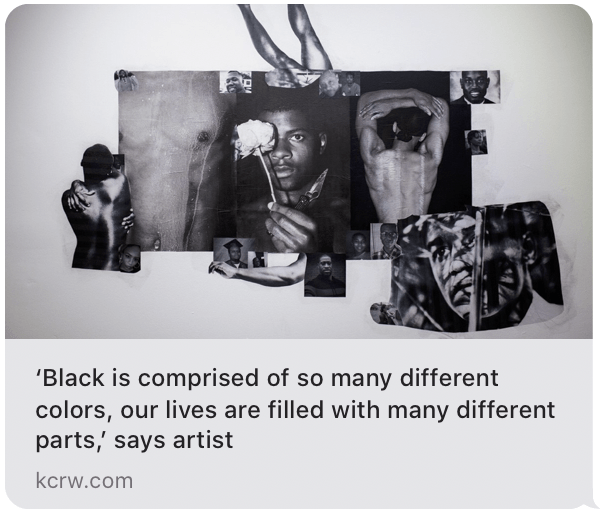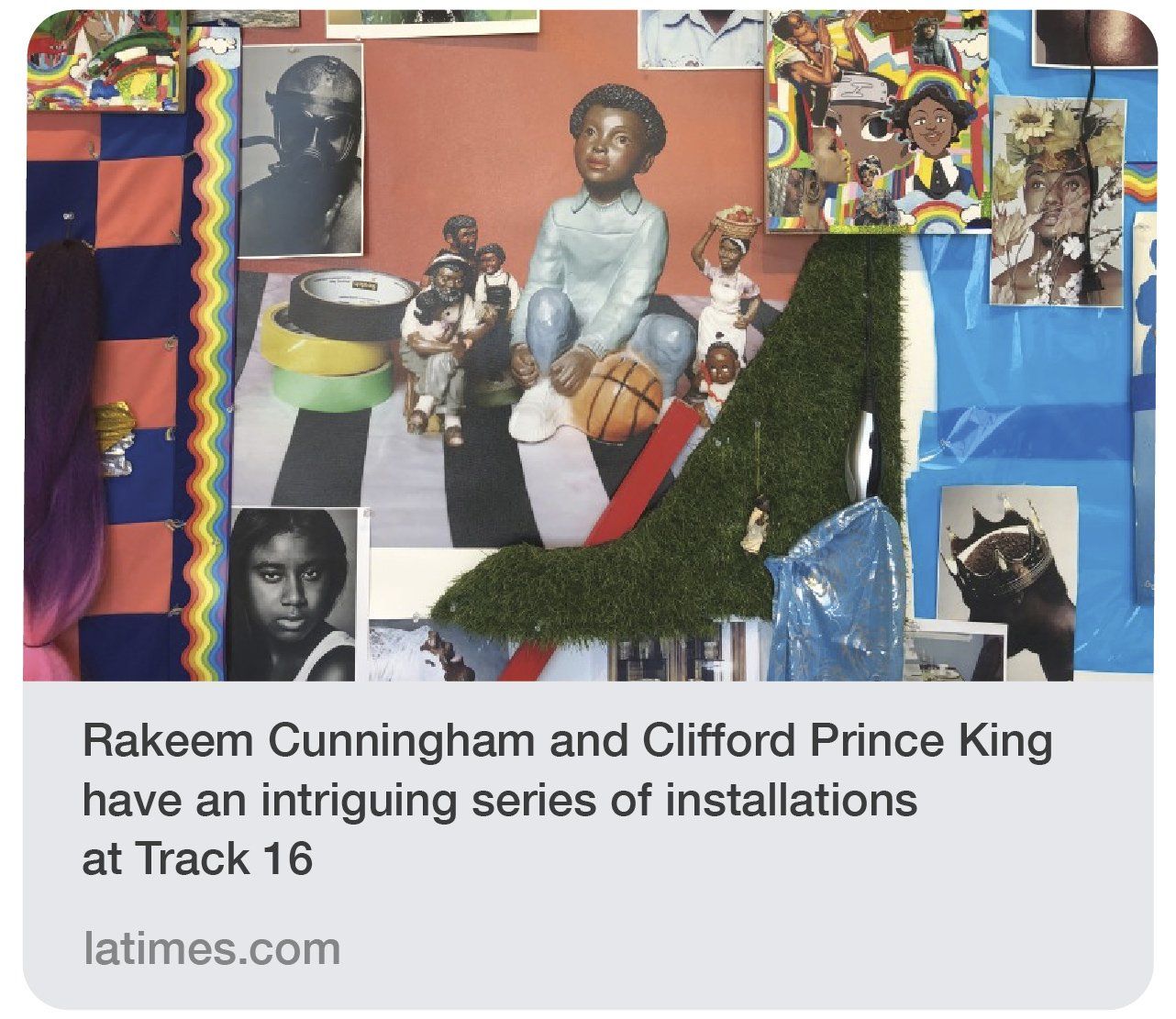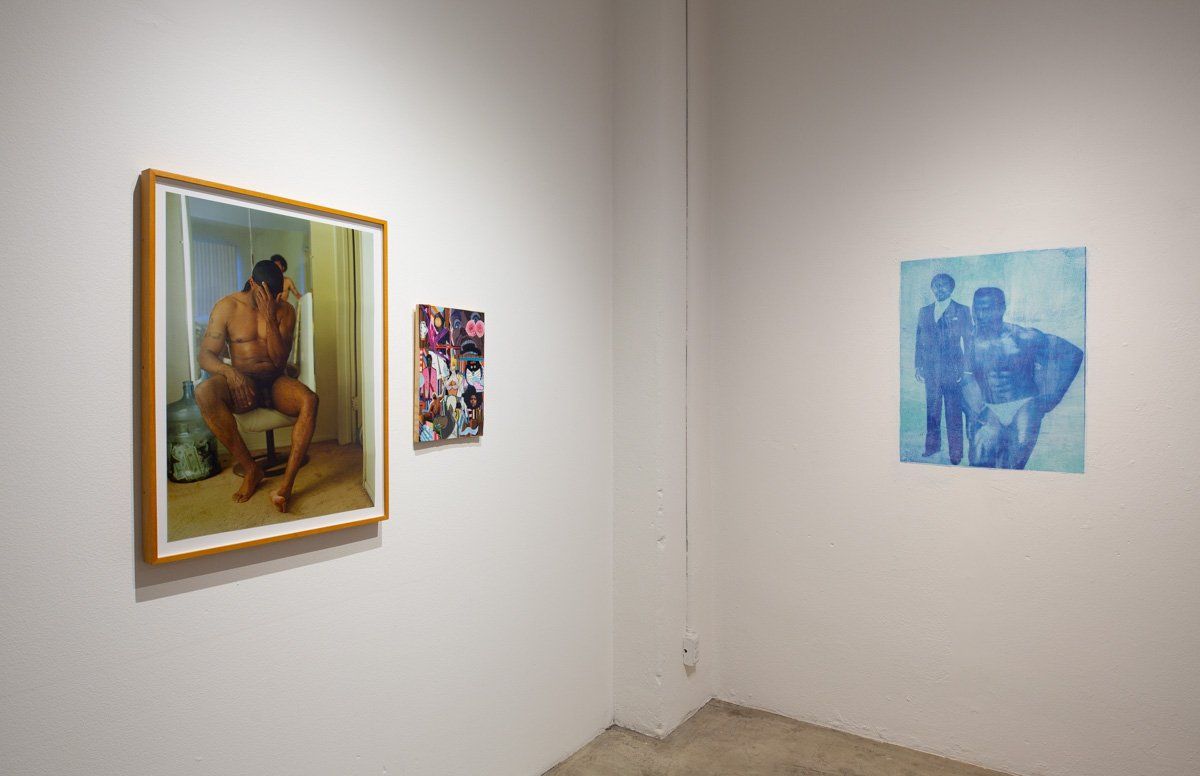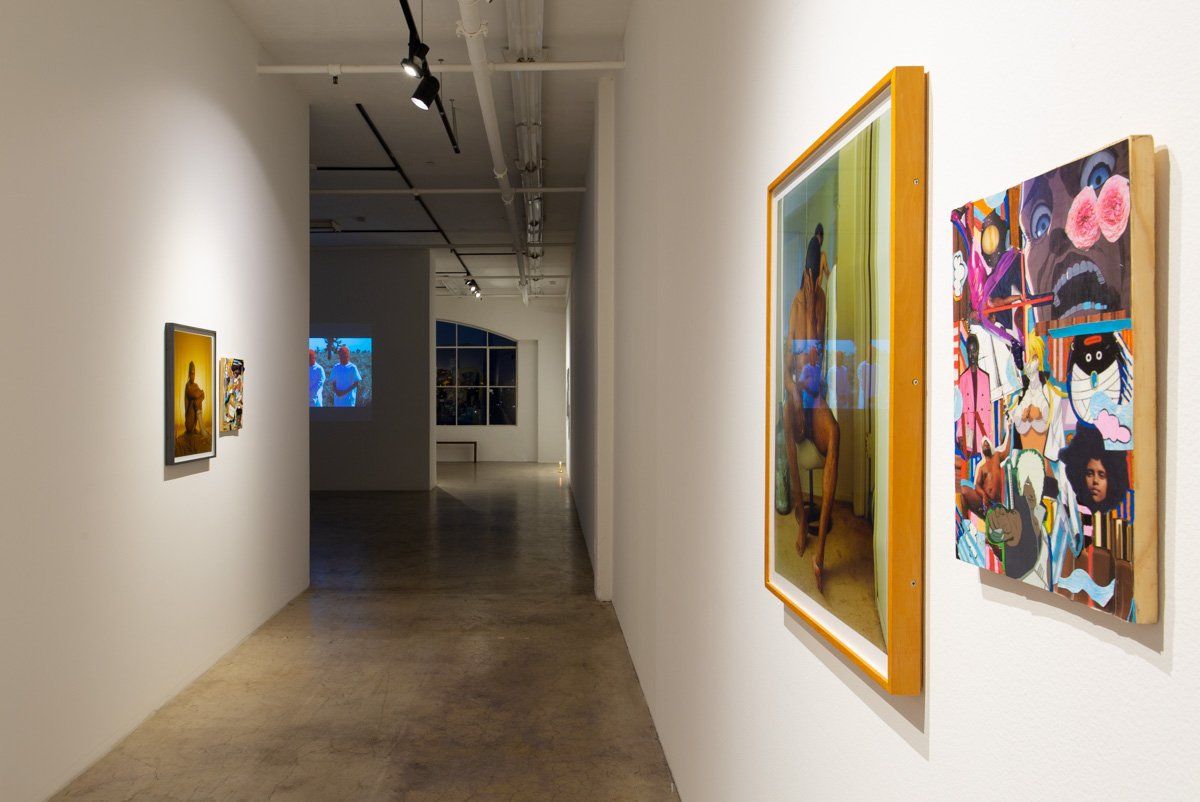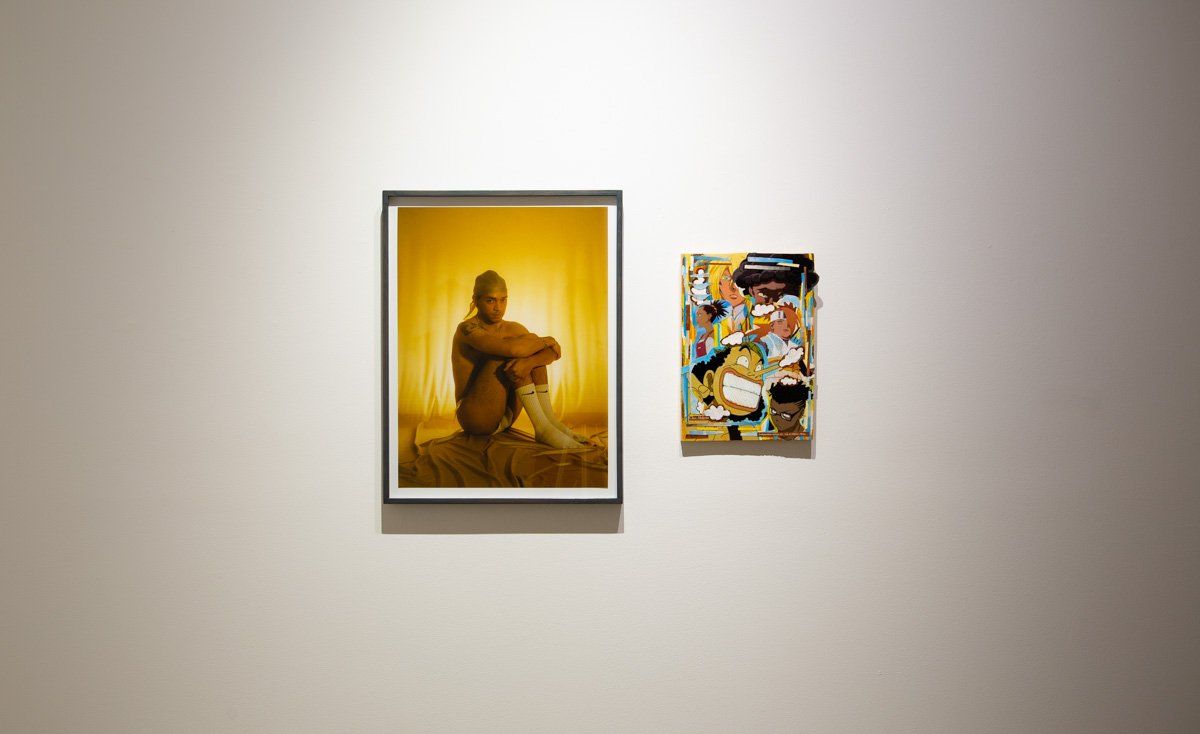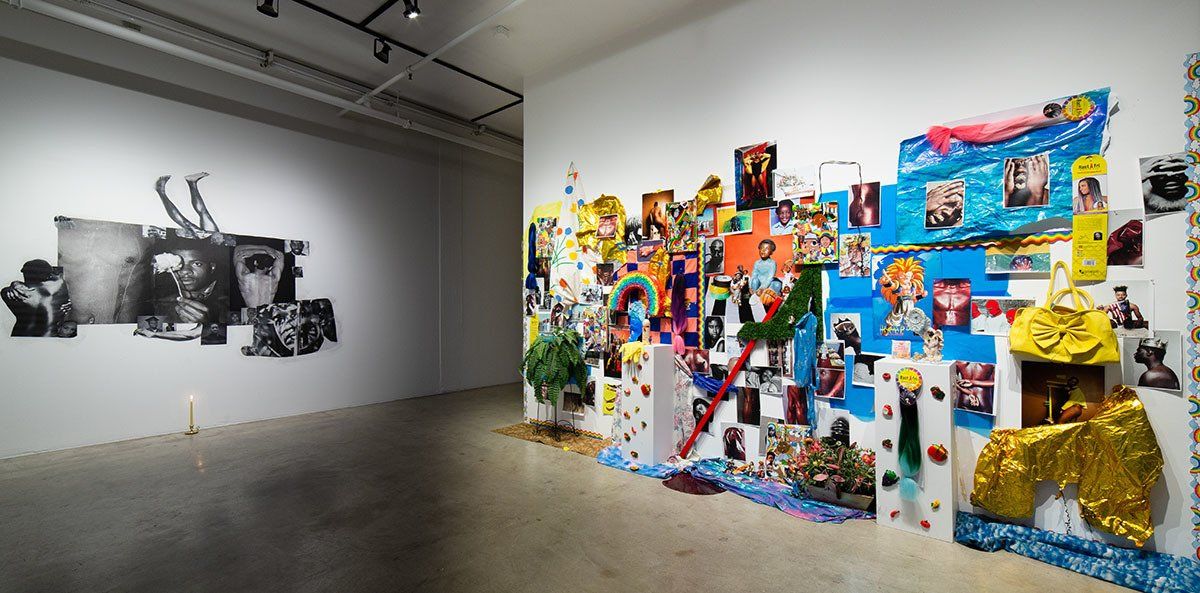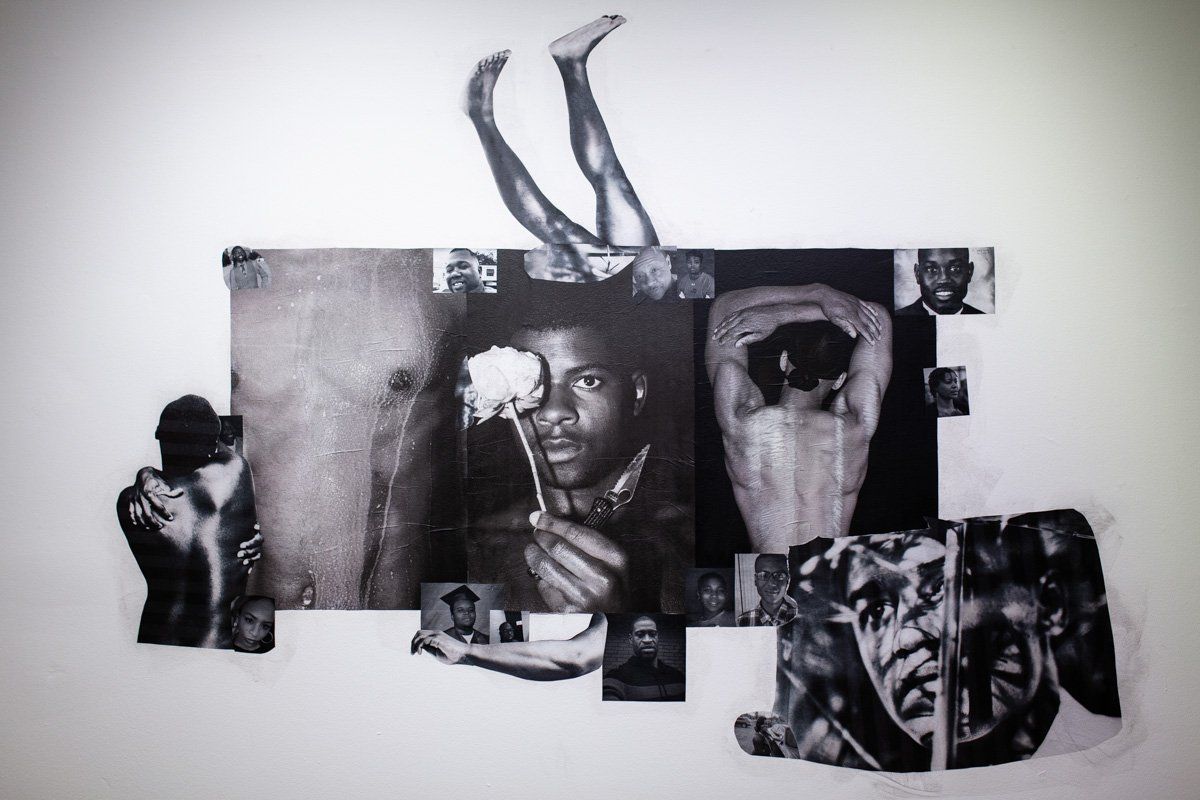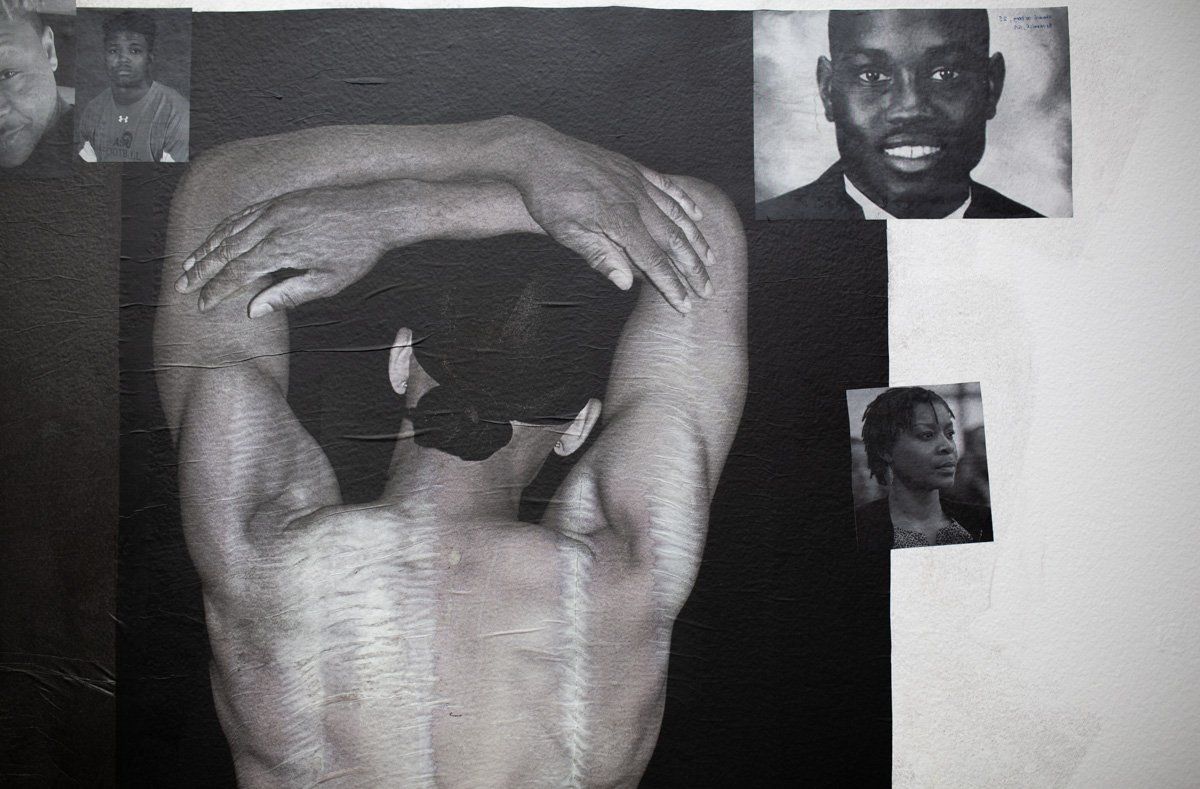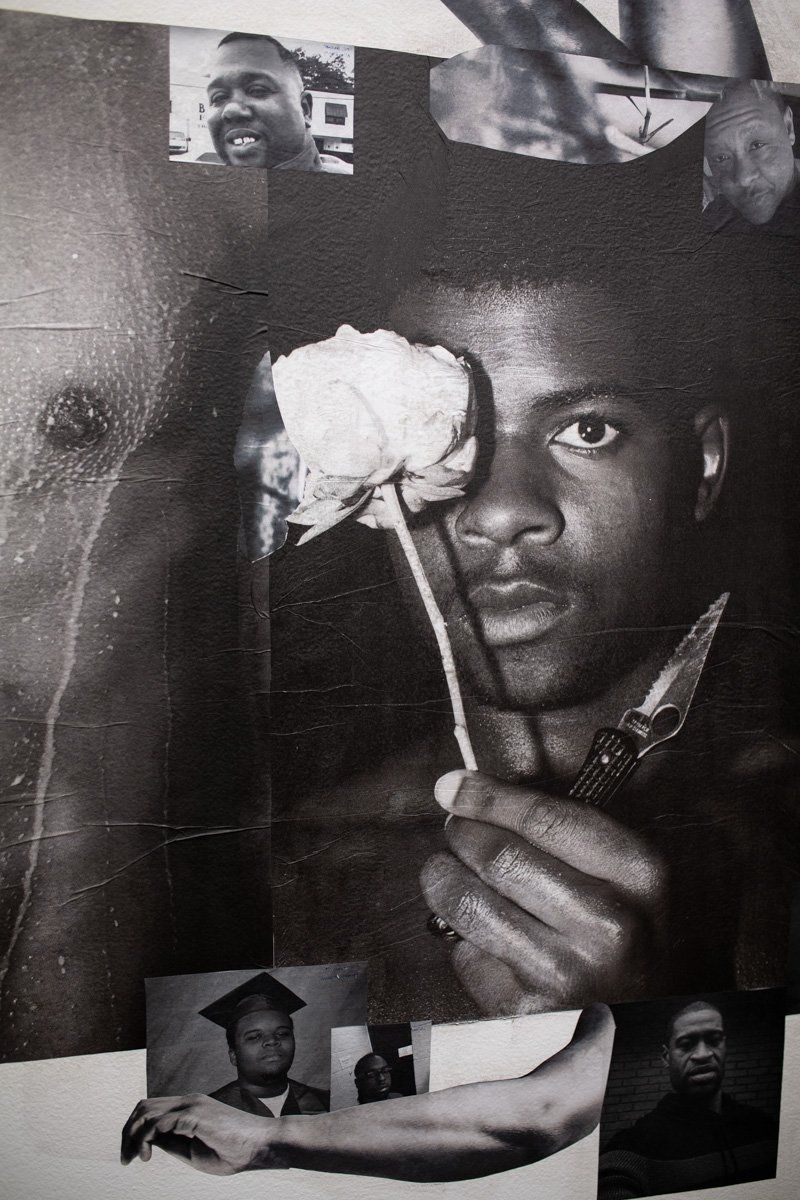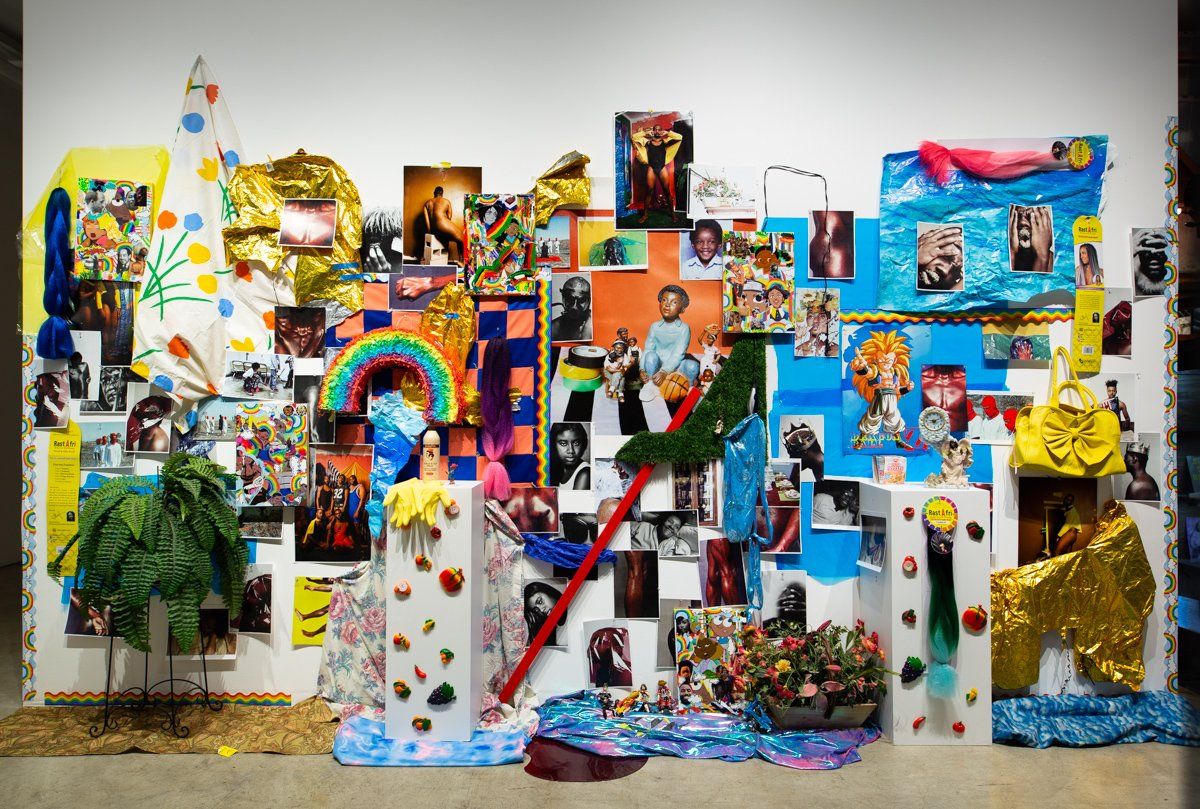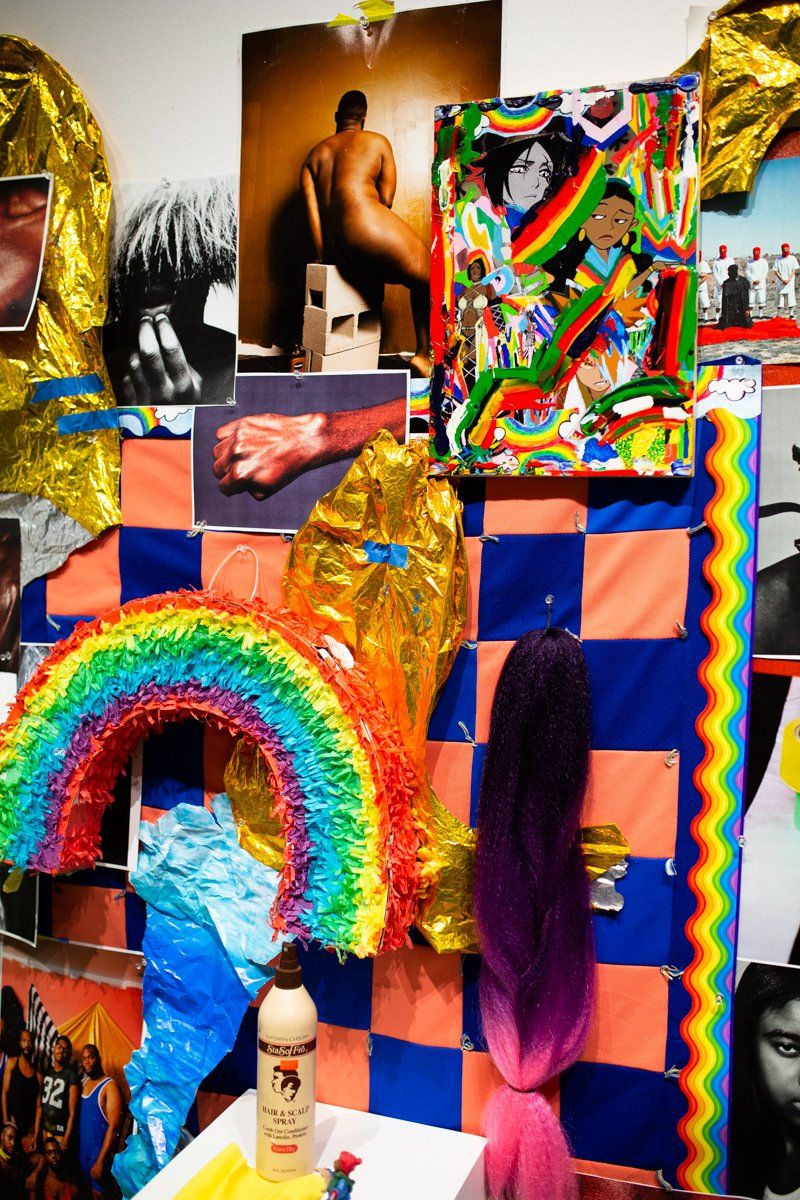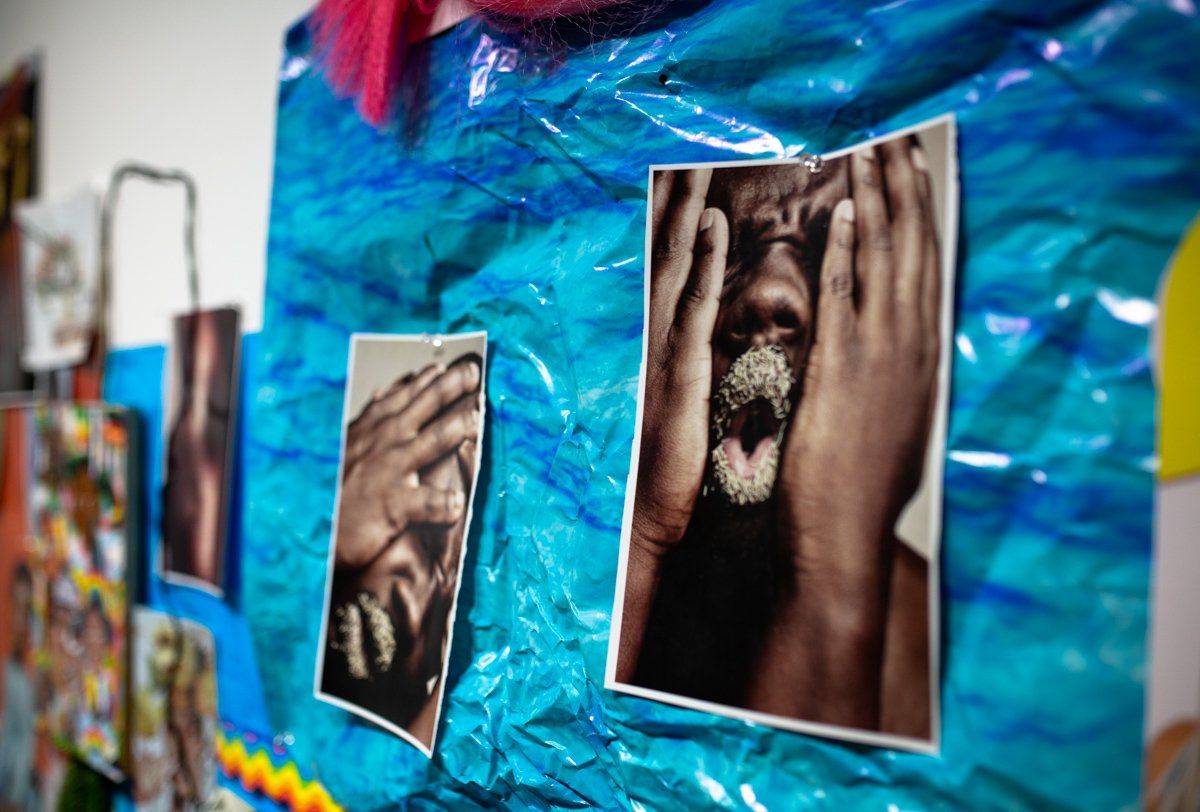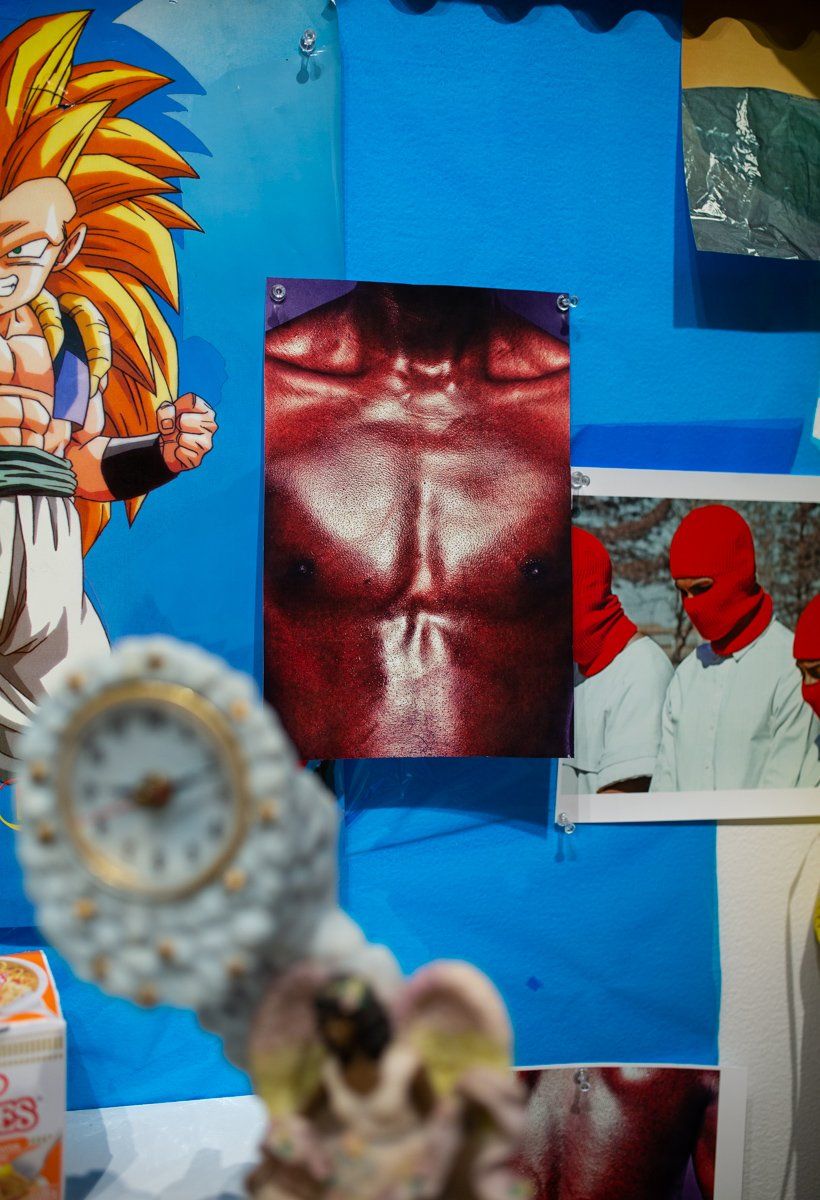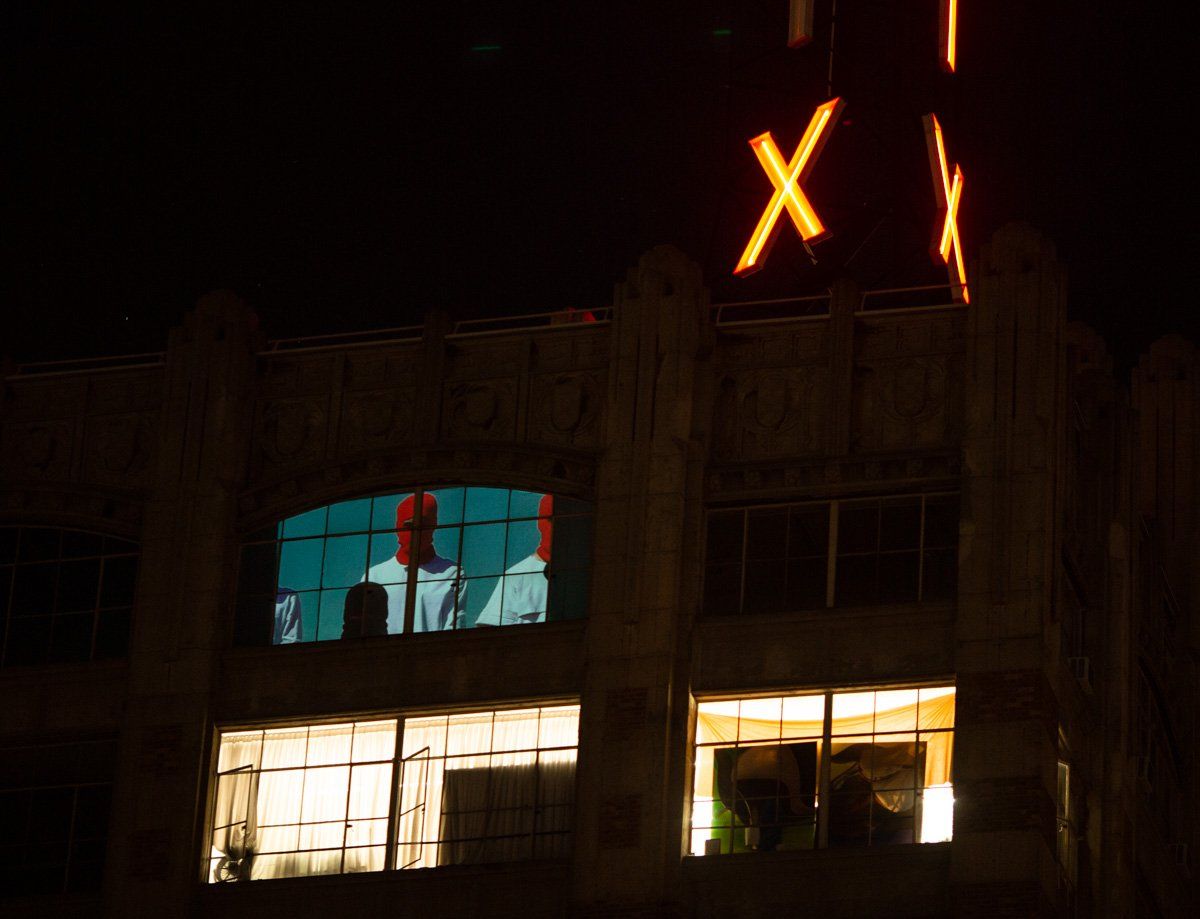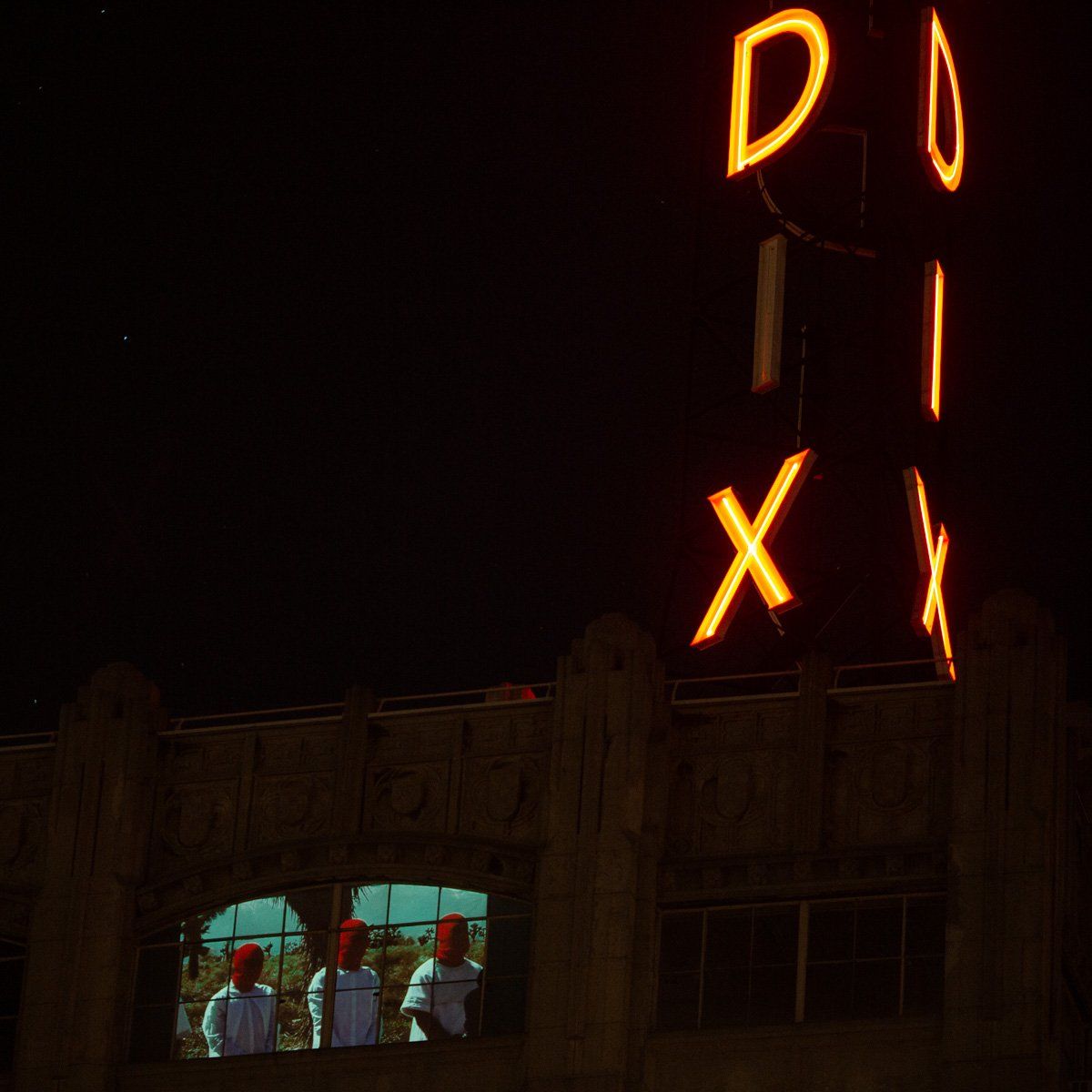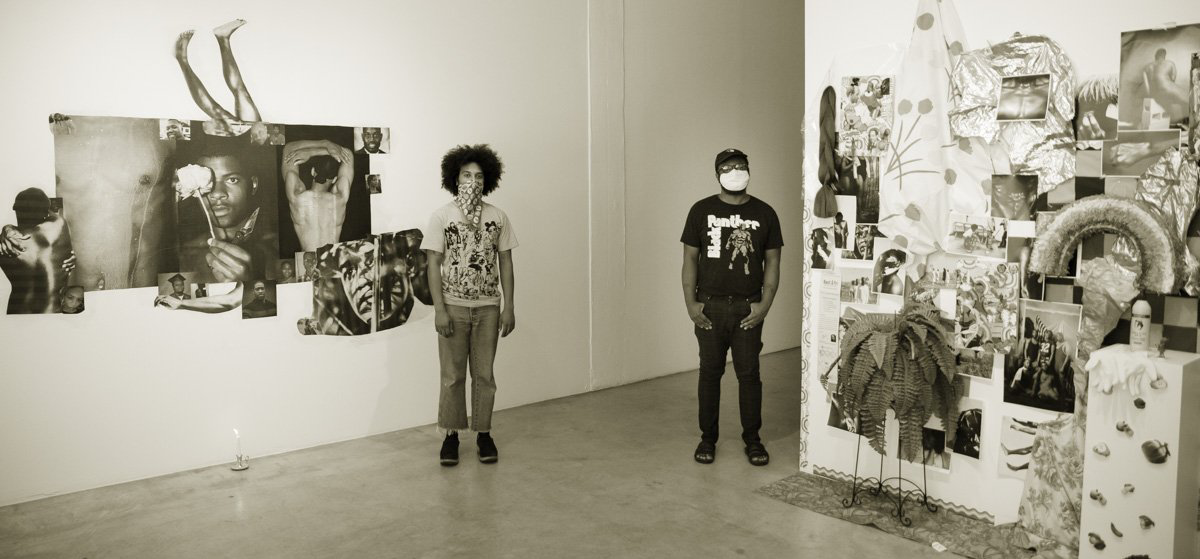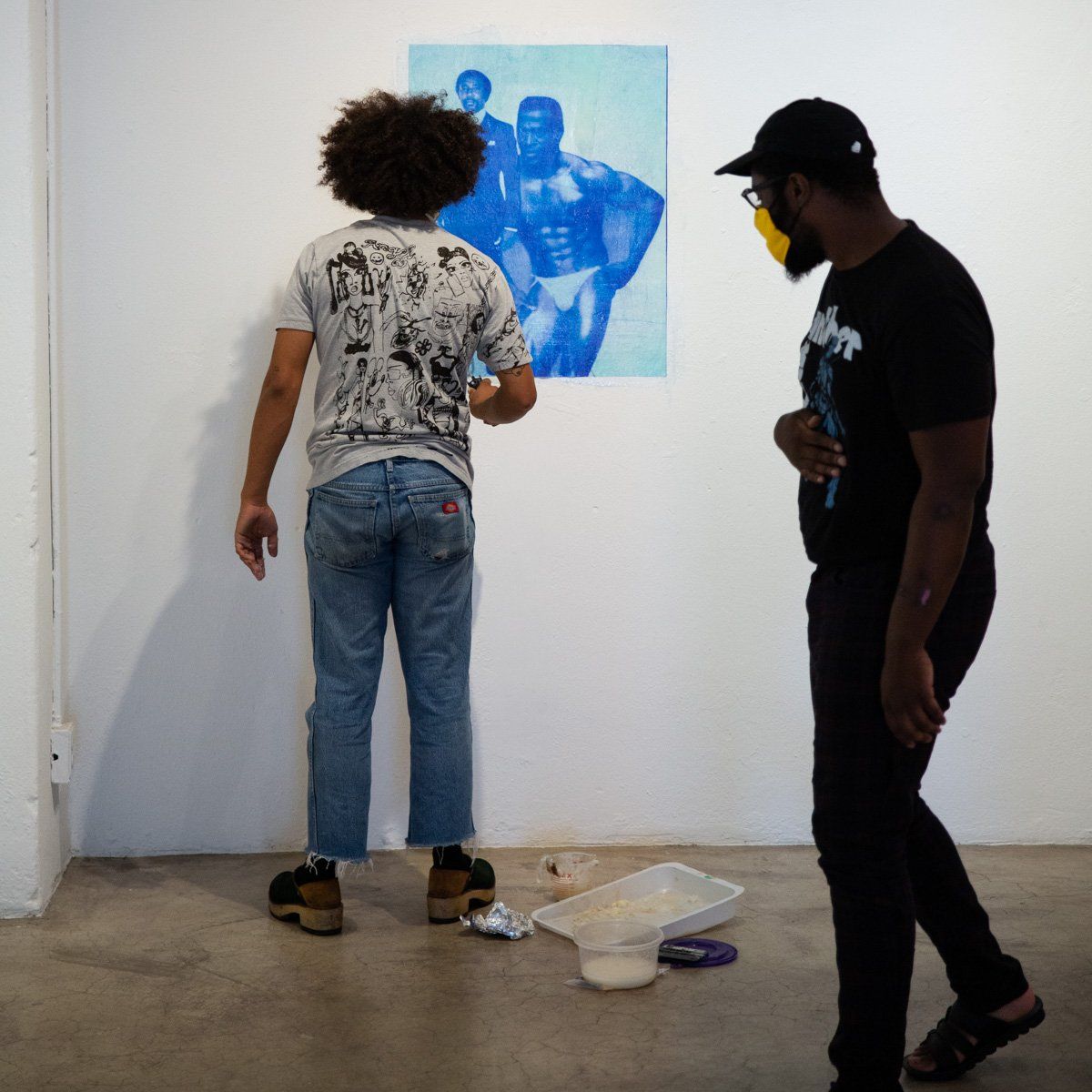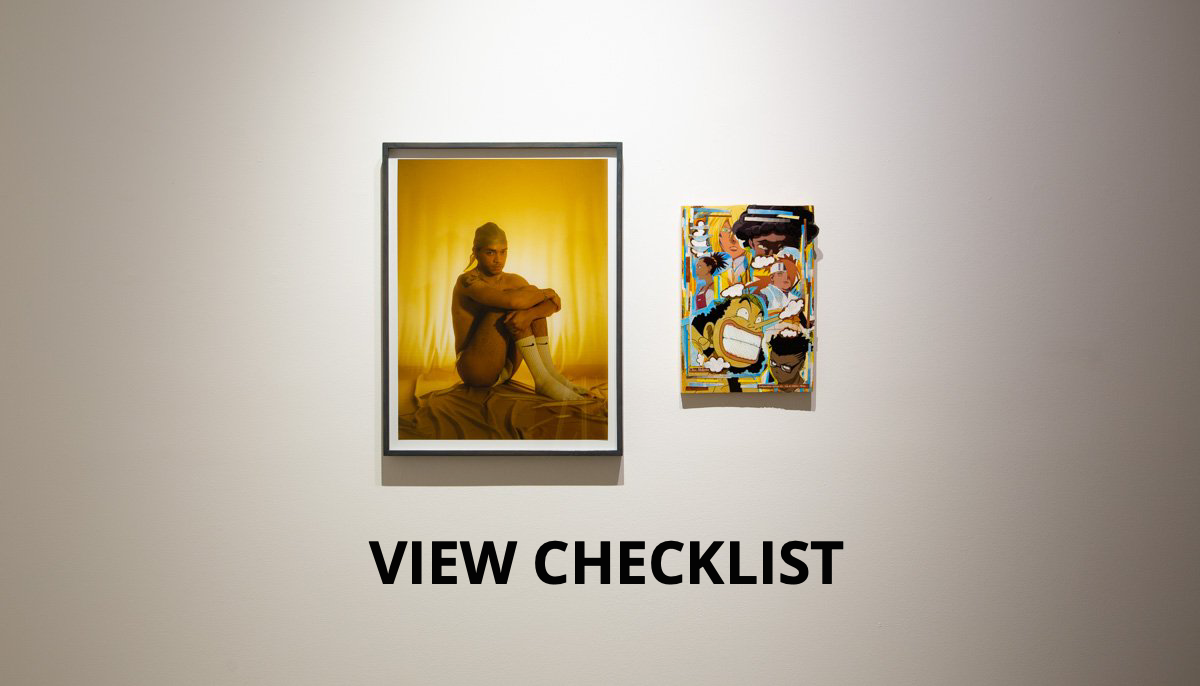Rakeem Cunningham & Clifford Prince King
INSTALLATION #000000
August 1 - September 5, 2020
ARTIST TALK ~ ABOUT THE EXHIBITION ~ PRESS COVERAGE ~
INSTALLATION SHOTS ~ VR WALKTHROUGH ~ ARTIST BIOS ~ EXHIBITION CHECKLIST
For list of works available and inquiries contact:
Sean Meredith ~ seanm@track16.com
Track 16 Gallery is pleased to present installations, photography, and video by artists Rakeem Cunningham and Clifford Prince King. Side by side the artists’ shrines “look into the Black reality, Black beauty, and Black trauma, surrounded by nurture and growth,” explains King. Through the foundation of photography these two Black queer artists continue the struggle of humanization.
Cunningham adds, “We’re asking the question, ‘how do we own the components that make us individuals and own the means of representation of ourselves?” That representation can be extravagant but demure, like Cunningham’s large scale collage. And it can be dignified and undisguised, like King’s photography.
Even as Black Americans struggle to create their own images to negate the distortion of Blackness defined in America through the derogatory lens of racism, gay identity has often erased from family history. Queer Black identity in the photography of Cunningham and King pierces both these barriers with confident gazes, unabashed modeling, and poignant vulnerability.
The two elements that fortify Cunningham’s large shrine are photographic portraits of himself and friends – often unclothed – and draped fabrics that callback memories of childhood and his grandmother’s house. In his photography, the fabric backdrops behind Cunningham’s subjects hang and swirl like Italian rococo clouds. His slightly over-the-top posed scenes are influenced by the visual language of video games, fashion, anime, and manga. Other pieces of the installation are objects from everyday experiences that continue to fill in his picture of Black life. Looking at the posed bodies of Cunningham and his subjects it’s hard not to see them in the context of the historical artistic canon, specifically that Black people were overwhelmingly excluded from representation.
Also included in the exhibition is Cunningham’s ME: part 3 (2014), a video made in reaction to the death of Trayvon Martin, which sadly still rings true today. Cunningham’s intention was to rebel against respectability politics and the demonization of Black youth that prevents them from growing and making mistakes in the same way white youth is allowed. In addition to being projected on the wall of the main gallery, the video is also being rear projected in one of Track 16’s windows during nighttime hours. This enables viewing from the street level and surrounding buildings in the Fashion District.
Video portion of Cunningham's ME, Part 3 (2014) rear projected northward towards downtown Los Angeles.
Before reaching King’s altar, we are presented with two photographs. In one, the subject sits in front of a glowing back drop, holding his knees and gazing calmly and intently. In the other, the subject – who is not making eye contact, sits naked facing us, his face covered by his hand. We can’t tell if he’s covering it to anonymize himself in this revealing photograph or if the camera captured a simple gesture the moment the shutter released. Behind him in a mirror we see – though obscured – the photographer, who also looks to be undressed.
Both of these photographs of Black queer life bask in a golden brown aura indicative of King’s style. On a wall adjacent to Cunningham’s bright, fully populated shrine, we find King’s somber – yet just as self-affirming – altar to Black being. Unlike the first images on photographic paper, the altar photographs are reproduced on copy paper and wheat pasted to the wall. Larger scale photographs of strong Black bodies are surrounding by smaller appropriated portraits of Black men who have been the victims of barbaric state violence. A single candle burns as a sentinel for the dead, and the living.
~ PRESS COVERAGE ~
KCRW ~ August 18, 2020
Lindsay Preston Zappas, the Editor-in-chief of Contemporary Art Review Los Angeles [Carla], looks at the exhibition for KCRW.
LOS ANGELES TIMES ~ August 15, 2020
The L.A. Times culture writer Carolina Miranda looks at the exhibition
in her Essential Arts newsletter.
~ INSTALLATION SHOTS ~
~ VR WALKTHROUGH ~
~ ARTIST TALK ~
~ ABOUT THE ARTISTS ~
Rakeem Cunningham is a multimedia artist and photographer based out of Los Angeles, California. Born in 1992, his work explores the many nuances of the queer black experience through photography, collage, installation, and video works. Cunningham often incorporates images from manga, anime, comics, and fashion magazines he’s consumed during his life, often in an attempt to subvert and identify tropes and stereotypes of blackness in media. While Cunningham focuses on queer identity politics, escapism, fantasy, self-acceptance, and the navigation of body politics under the queer landscape he’s also interested in exploration and interaction of materials. Cunningham received his BFA from the UCLA design and media arts department and is currently a member of Montevista Projects in Los Angeles.
Clifford Prince King (b. 1993) is an artist and photographer living and working in Los Angeles, CA. King documents his intimate relationships in traditional and routine settings that speak on his experiences as a queer black man. As an artist who did not attend college or formally study the medium, King’s imagery is uniquely his own. Layered within his tender portraits are nods to the beyond. Shared offerings to the past manifest in codes hidden in plain sight, known only to those who sit within a shared place of knowledge. A poster in a bedroom, a wig on a dresser, the labor of watermelon, small collections of items that signify a specific blackness and sensuality. All these could be missed. In these instances, King’s work begins to morph into an offering of memory; it is how he honors and celebrates the reality of layered personhood. Soft moments of refuge and uninhibited intimacy that is unapologetically honest. King's imagery prioritizes what it means to be seen and tended to in ways that move beyond the physical. Portraiture becomes prose. It is in the layering of spaces that King’s work is not simply an act of archiving; it is a part of a collective world making, of sustaining and imagining black queer existence defined by the lived experience of those who are black and queer.
~ EXHIBITION CHECKLIST ~

